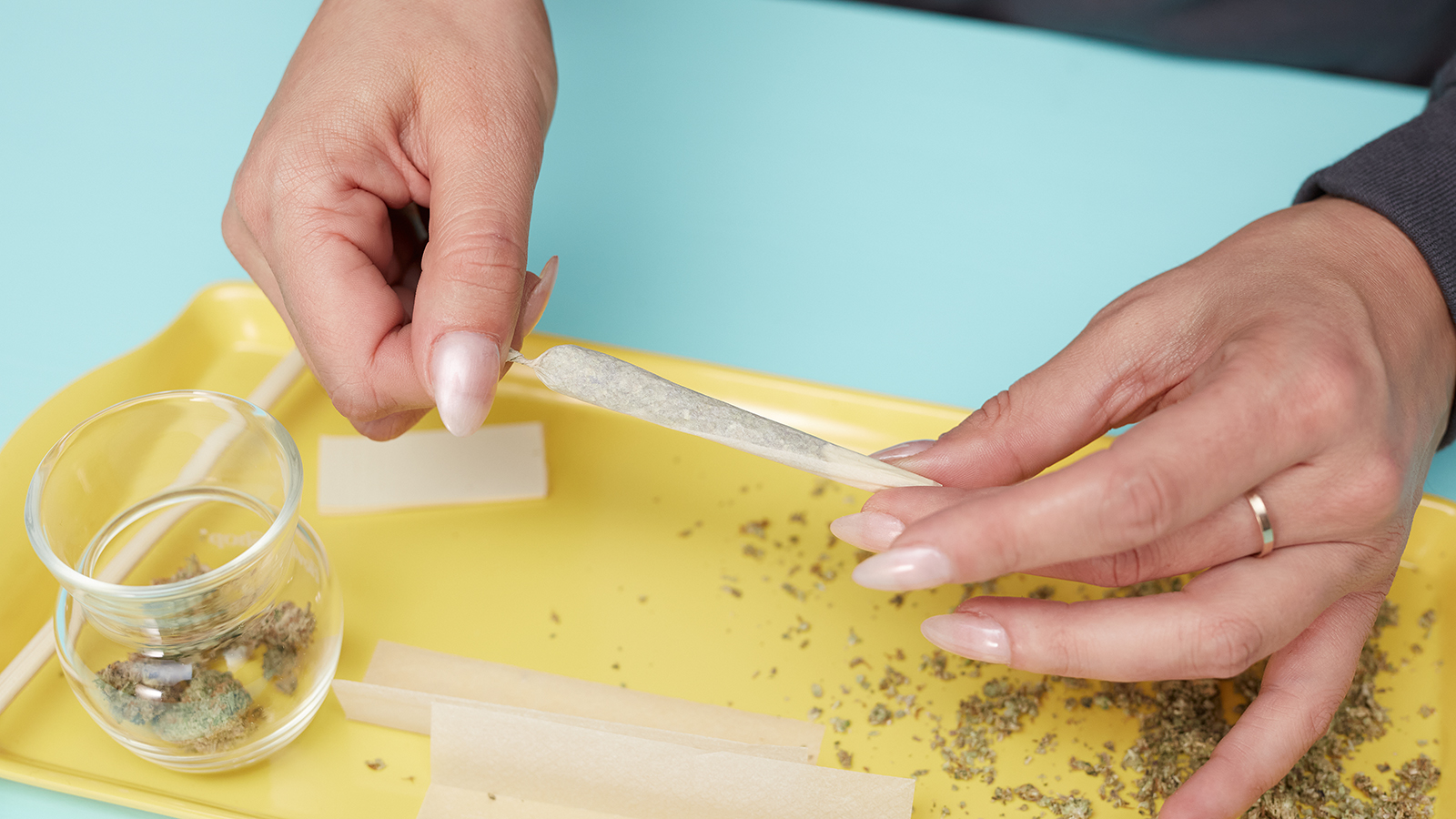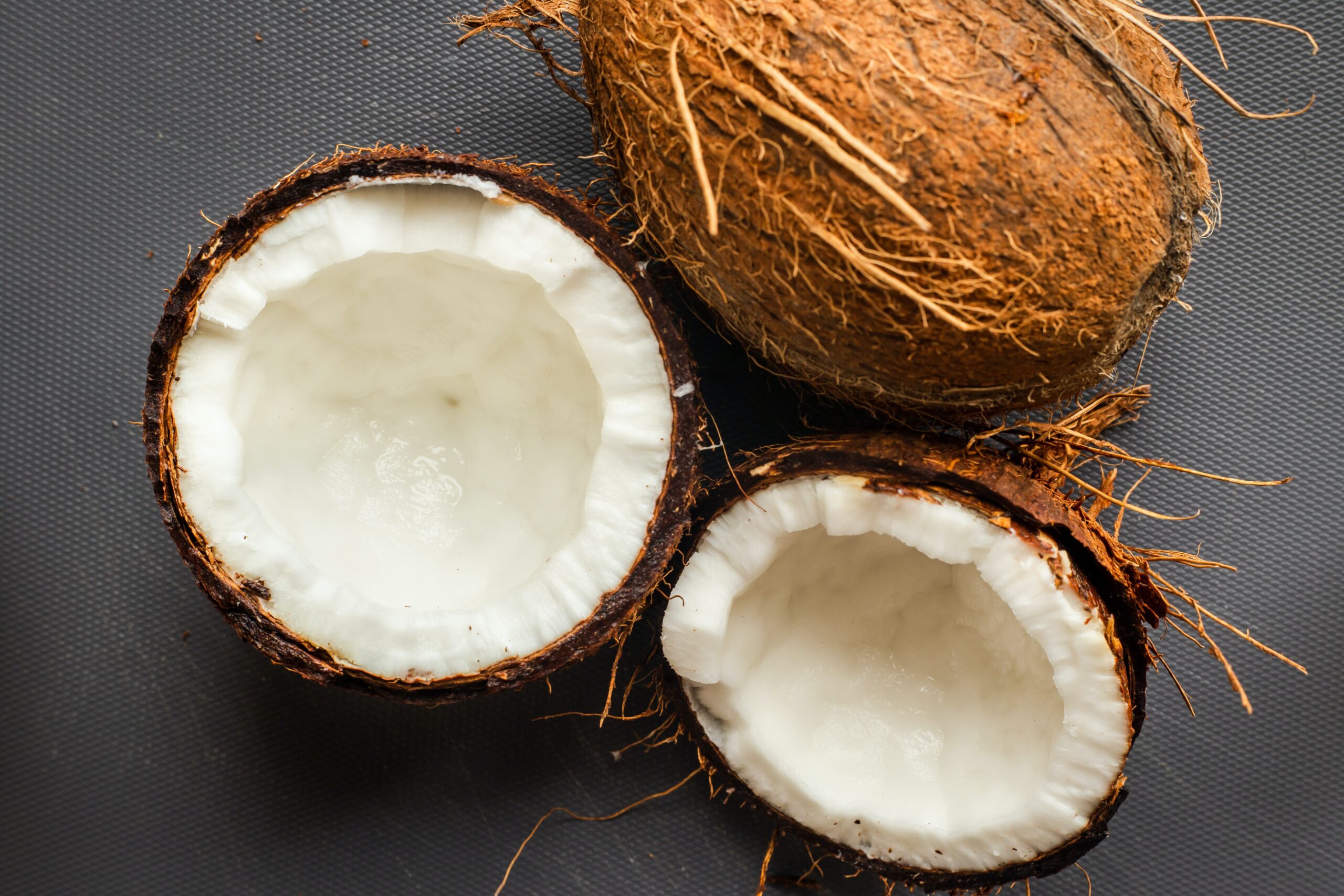Smoking joints is one of the most popular ways to consume cannabis, and passing a joint is part of the social aspect of cannabis consumption. For many, learning to roll the old-school way is a cultural initiation.
Rolling a joint can be a highly personal, intricate craft, but with a few simple steps, any beginner toker can roll their own.
What is a joint?
A joint is a tobacco-less cannabis cigarette that's often hand-rolled by an individual. Many dispensaries offer pre-rolls or joints rolled in-shop, saving consumers a few steps.
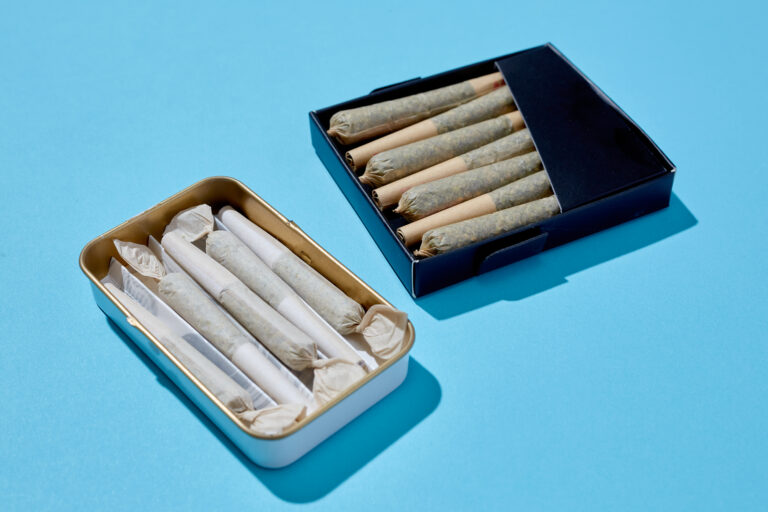 Photo by: Gina Coleman/Weedmaps
Photo by: Gina Coleman/WeedmapsImage lightbox

A cannabis joint that includes cannabis flower and tobacco is called a spliff, while a cigar hollowed out and filled with cannabis is a blunt. Blunts can also be made by rolling cannabis in the type of heavy, dark tobacco papers used for cigars.
How much weed is in a joint?
The amount of weed in a joint can vary widely depending on your preference or how much weed you have. Generally, though, joints come in the following sizes:
- Small: The smallest, thinnest joints are known as pinners or dog walkers. They're typically designed to be smoked by one person in one session and contain 0.25 – 0.5 grams of cannabis.
- Standard: The average joint rolled with standard-sized rolling paper contains 0.5 – 1 gram of cannabis.
- King-size: King-sized rolling papers can contain 1 – 2 grams or more of ground cannabis.
You can learn more about the different weed measurements in our comprehensive guide.
How much THC is in a joint?
On average, joints contain anywhere from 60 to 150 mg of THC or more.
If you want to calculate how much THC is in the joint you rolled, you will first need to use a scale to measure how much the rolling paper and filter weigh. Add the total together and subtract that number from the total weight of your joint.
Once you know the weight of the flower in your joint, you can use this formula:
The weight of the joint (in milligrams) multiplied by potency/THC percentage equals total milligrams of THC.
One gram = 1000 milligrams.
Example: The difference between a half gram and full gram joint of the same 20% THC flower:
1 gram: 1000 mg x 0.20 = 200 mg
Half gram: 500 mg x 0.20 = 100 mg
You can find the THC percentage of the flower on its Certificate of Analysis (COA).
However, this formula won't tell you how much THC you're really consuming. This depends on:
- Your bioavailability
- Your puff technique
- The ratio of THC to CBD
- How much THC is wasted as the joint smokes while you're not inhaling
What do you need to roll a joint?
Aside from flower, you only need a few things to start rolling joints:
Rolling papers
Rolling papers are thin, smokeable sheets of paper used to make cigarettes or joints. The best rolling papers for you depend heavily on personal preference, but here are a few factors to consider when choosing them:
- Material: Rolling papers are typically made from wood pulp, rice paper, hemp, flax, or cellulose. The edge of a rolling paper typically has a strip of gum — often made from a type of sugar or natural gum — which, when licked, helps seal the joint.
- Size: Rolling papers come in several sizes and range from 2.75 x 1.4 inches to 4 x 2 inches. Sizes include single-wide, 1¼ size (can contain a quarter more weed than the single), 1½ size (can consist of 50% more weed than the single), double-wide, king-size, and king-slim, which is as long as a king and as wide as a 1¼-inch joint.
- Flavor: Some rolling papers are flavored to enhance the smoking experience. Popular flavors include strawberry, blueberry, watermelon, and mint.
- Burn rate: Some papers are designed to burn slower or faster and will indicate burn rate on the packaging or product website.
- Additives: Some rolling papers are advertised as free of additives, bleach, or other chemicals to promote a more natural smoking experience.
Filters/crutches/tips
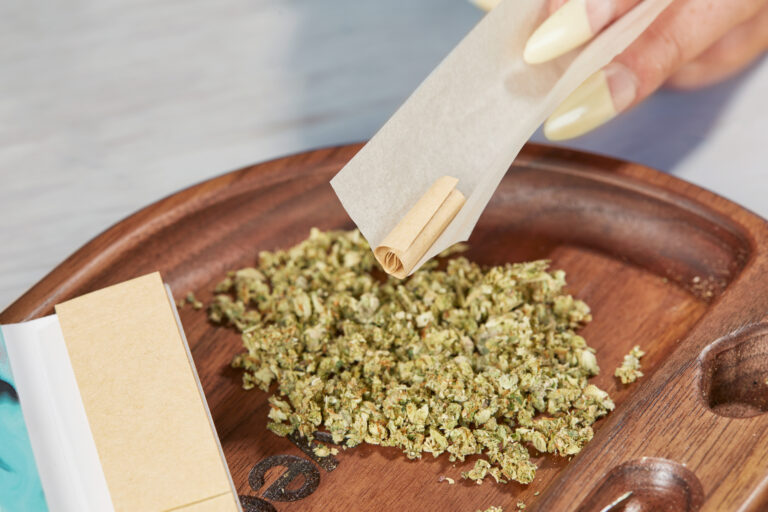 Photo by: Gina Coleman/Weedmaps
Photo by: Gina Coleman/WeedmapsImage lightbox

Filter tips, known as filters, tips, or crutches, are pieces of sturdy paper added to one end of a joint to act as a filter for wayward embers, preventing small amounts of tobacco or cannabis from entering your mouth when you're smoking. They also allow you to hold the joint without burning your fingers and provide a more stabilized structure when rolling. Some people call them “roaches,” but a roach is actually the last little charred bit of a smoked joint.
You can buy filter tips separately from your rolling papers, though many rolling paper packs offer strips of paper meant to be used for filters. If you're in a bind, you can easily tear off a piece of a business card or the rolling paper packaging to roll a filter tip.
Glass and wooden crutches are nice alternatives to paper and can be found at tobacco shops, head shops, and dispensaries. You can even get creative and use a piece of fusilli pasta as a filter.
Rolling tray
Rolling trays are an excellent addition to your joint rolling setup since they keep everything organized and in one place. Some rolling trays have compartments for grinders, rolling papers, concentrates, and weed jars, while others simply offer a flat surface to roll your joints and keep excess cannabis from dropping onto the surrounding areas.
Grinder
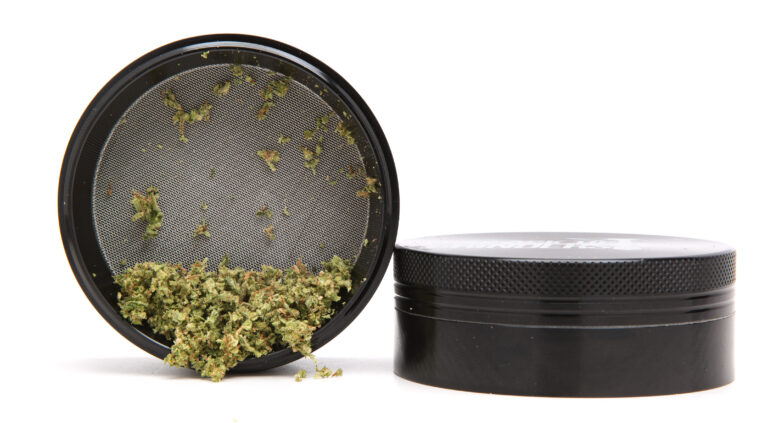 Photo by: Gina Coleman/Weedmaps
Photo by: Gina Coleman/WeedmapsImage lightbox

Before rolling a joint, you need to break down your cannabis — preferably with a grinder — into smaller pieces to make it easier to roll. A grinder will produce a consistent size and texture, providing a smoother, more even smoke.
Here are the various types of grinders on the market:
- Two-piece: These are the simplest grinders, consisting of two pieces that fit together. When you twist the two pieces, the cannabis inside gets crushed between the grinder's teeth. The ground cannabis remains in the same compartment.
- Three-piece: These grinders have a top compartment where you put the buds. As you twist the grinder, the ground cannabis falls through holes into the bottom chamber, allowing for easier retrieval of the ground material.
- Four-piece: The top compartment of this grinder is for whole buds, the second is where the ground cannabis falls, and the third is a kief catcher. The ground cannabis in the second compartment sits on a screen, and with time and use, the trichomes — often referred to as “kief” — separate from the bud and fall through the screen into the third compartment. You can add the kief to your joints for a more potent experience.
- Electric: These are battery-powered devices that grind cannabis buds with the push of a button. They are convenient for those who have trouble manually grinding or want to quickly process a larger amount of flower.
- Grinder cards: These are flat, credit card-sized metal cards with perforated holes or sharpened areas designed for grinding. You can rub a nug against the card to break it down. They're highly portable and discreet but might be less efficient than other grinders.
How to roll a joint: Step-by-step guide
Once you've gathered your materials, you're ready to roll. Follow these steps to roll a perfect joint:
Step 1: Grind cannabis
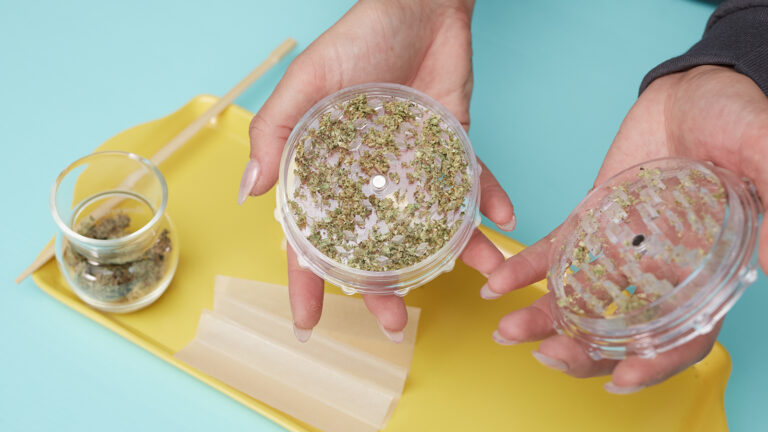 Photo by: Gina Coleman/Weedmaps
Photo by: Gina Coleman/WeedmapsImage lightbox

Use a grinder to separate and evenly grind up the flower. Pick the bud apart with your fingers if you don't have a grinder.
Work gently to minimize damage to the cannabis trichomes as you remove any stems or seeds and make the pieces more or less the same small size.
Step 2: Make crutch
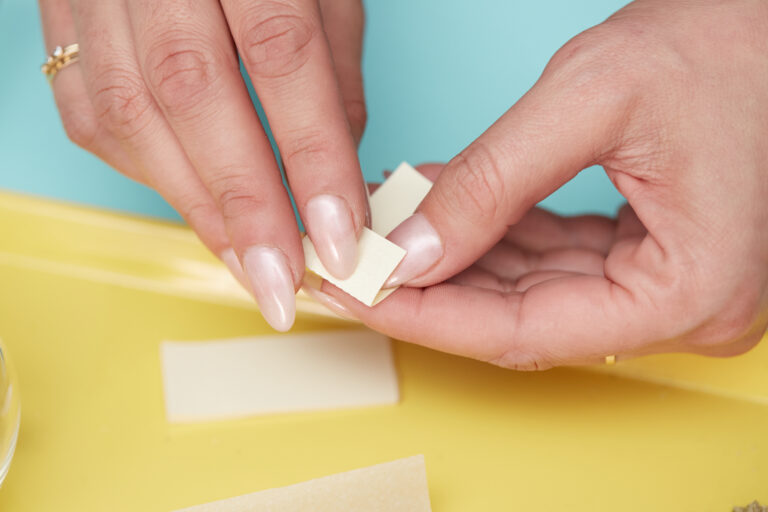 Photo by: Gina Coleman/Weedmaps
Photo by: Gina Coleman/WeedmapsImage lightbox

Many smoke shops sell pre-made crutches to serve as the mouthpiece of a joint. If you don't have any on hand, make your own:
- Grab a piece of thick paper or cardstock and rip off a rectangle-shaped strip about half an inch wide (¾ inch if you're using king-size papers).
- Fold the paper into an accordion shape, then wrap the last bit of paper around the accordion part.
- Place the filter at one end of your rolling paper.
Step 3: Load joint
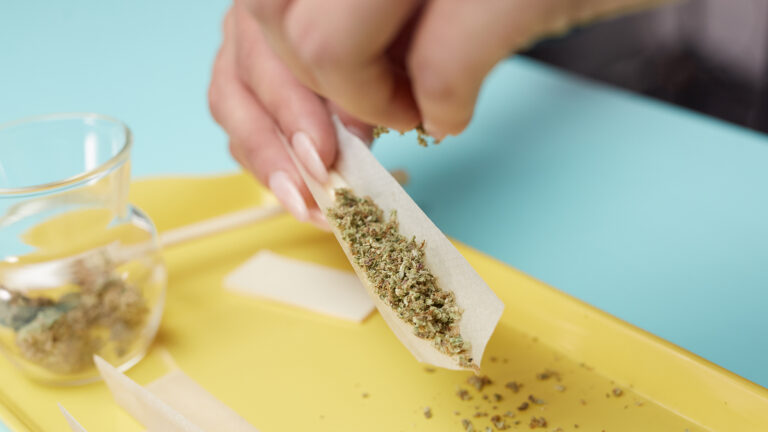 Photo by: Gina Coleman/Weedmaps
Photo by: Gina Coleman/WeedmapsImage lightbox

Lay the rolling paper on the rolling tray with the adhesive side away from you. Position the crutch where you want the mouthpiece to be and sprinkle ground cannabis onto the paper in a column in line with the crutch. Evenly spread the flower throughout the joint and avoid overstuffing.
To roll a cone joint, sprinkle less weed near the mouthpiece and more towards the tip, tapering as you move along.
Step 4: Roll joint
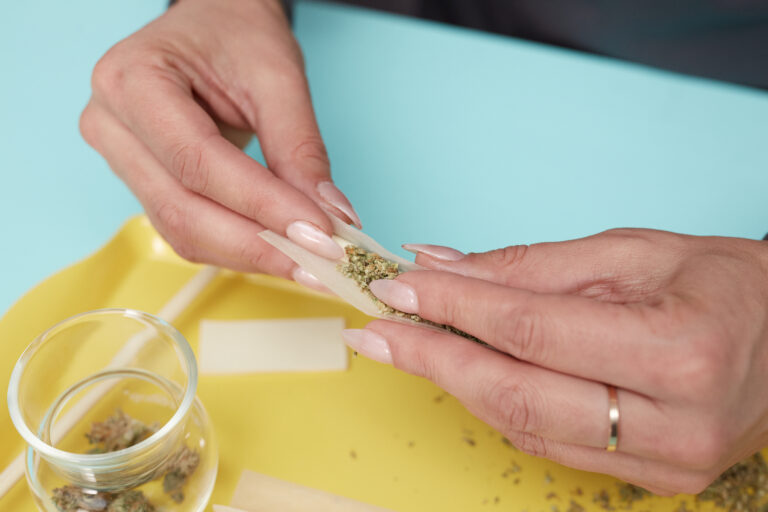 Photo by: Gina Coleman/Weedmaps
Photo by: Gina Coleman/WeedmapsImage lightbox

Ensure the adhesive-coated side of the paper is away from you, and pick up the cannabis-filled paper. Use your thumbs and index fingers to pinch the paper into a taco shape, sifting the paper back and forth to distribute the bud evenly. Pack it down a bit.
If some flower falls out, it's okay — you can stuff it in later. Work the weed into a cylinder shape, not so loose that it will burn unevenly and not so tight that it will restrict airflow.
Step 5: Wet the seal
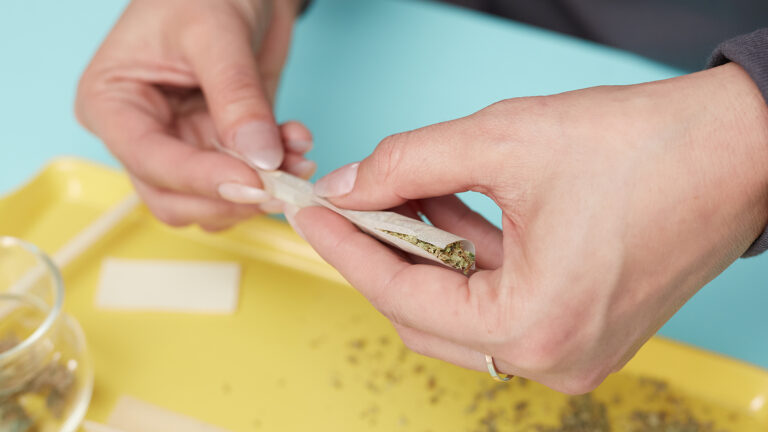 Photo by: Gina Coleman/Weedmaps
Photo by: Gina Coleman/WeedmapsImage lightbox

Tuck the non-adhesive side of the rolling paper over the weed and slowly roll it towards the adhesive side, tucking in the bud as you go. Use your thumbs to roll and your index fingers to support the outside.
Lick or wet the sticky adhesive and start at the mouthpiece end to slowly seal the joint.
Step 6: Pack it in and close
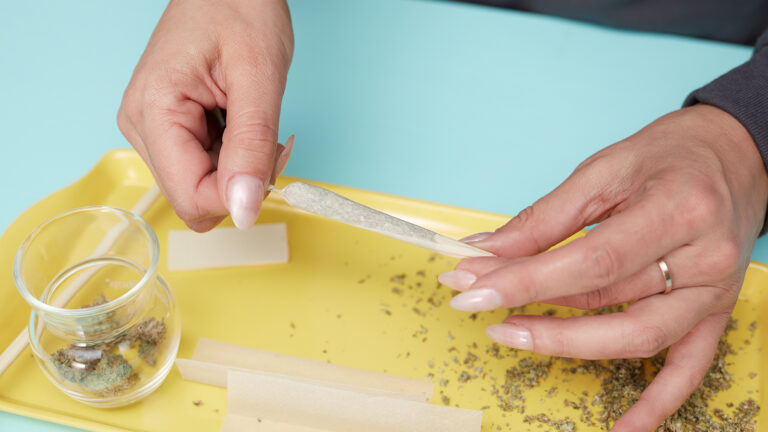 Photo by: Gina Coleman/Weedmaps
Photo by: Gina Coleman/WeedmapsImage lightbox

Once it's sealed, grab a chopstick, pen, or another long, cylindrical object to pack down the cannabis towards the mouthpiece. This is where you can add back any weed lost during the rolling phase.
Twist the extra paper at the joint's tip to seal everything shut.
Step 7: Enjoy
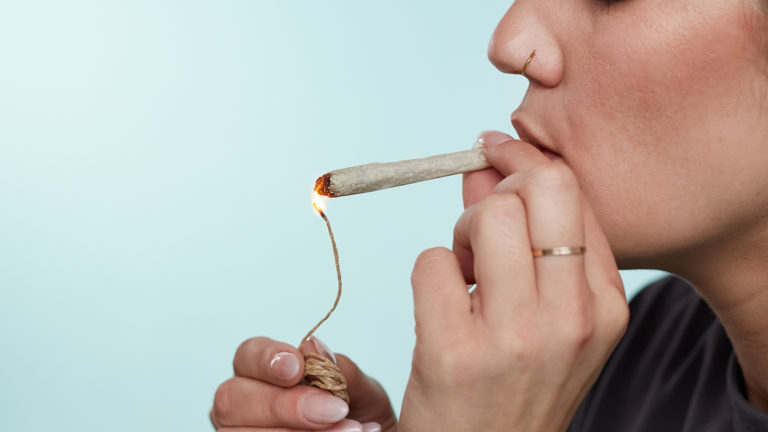 Photo by: Gina Coleman/Weedmaps
Photo by: Gina Coleman/WeedmapsImage lightbox

Finally, it's time to light up your joint and inhale through the mouthpiece.
Joint rolling pro tips
Follow these tips to make your joint-rolling experience a little easier:
- Start with 1¼ rolling papers. While it might be tempting to start with king-size since it sounds easy to handle, it can be difficult to roll for the first time. Consider practicing with 1¼-inch paper until you're comfortable experimenting with other sizes.
- Start with thick rolling papers. Opt for a thicker paper like hemp when you're just starting out. This will make it easier to practice rolling joints. After some practice, you can move on to something so thin that it's nearly invisible.
- Start rolling at the crutch. Hold the filter end tightly between your index finger and thumb. This gives the whole thing stability, gets your hand in the correct position, and provides a good starting point to wrap around.
- Align your weed before you roll. Before you roll, take a moment to look at the row of cannabis in the paper. Is it evenly spread? Rock the paper back and forth to pack it together a bit before rolling it up.
- Don't be afraid to start over. You don't have to lick and seal immediately after you roll. If you've rolled and the joint isn't to your liking, unroll and try again. Even if you waste the paper and need another one, that's better than having the whole thing come apart while smoking or passing it. Have some patience, and you'll be making joint art in no time.
- Lick your joint lightly. When you're ready to seal your joint, there's no need to slobber all over it. A little moisture along the glue strip will seal the joint just fine.
- Twist and push the tip of the joint. Once you've packed your joint with cannabis and rolled it up tightly, give the paper at the open end a little twist and gentle push. This will seal in the bud, ensuring it's packed right for when you spark it up.
How to light a joint
There is an art to lighting a joint properly. Consider these common questions before lighting up your freshly rolled joint.
How do you light a joint without canoeing?
Canoeing occurs when only the top half of the joint burns lengthwise. The key to avoiding canoeing is to twist your joint slowly as you light it to ensure you are lighting up the whole tip equally.
Patience will help create a long-lasting, fully lit cherry so you won't have to relight. Once the tip of the joint is evenly lit, inhale a few short puffs to ensure the cherry is fully formed. The joint should stay lit without any effort on your part. Lighting your joint carefully should help it burn evenly, but if your joint keeps canoeing, it may need to be rolled more tightly.
Is it bad to light a joint with a lighter?
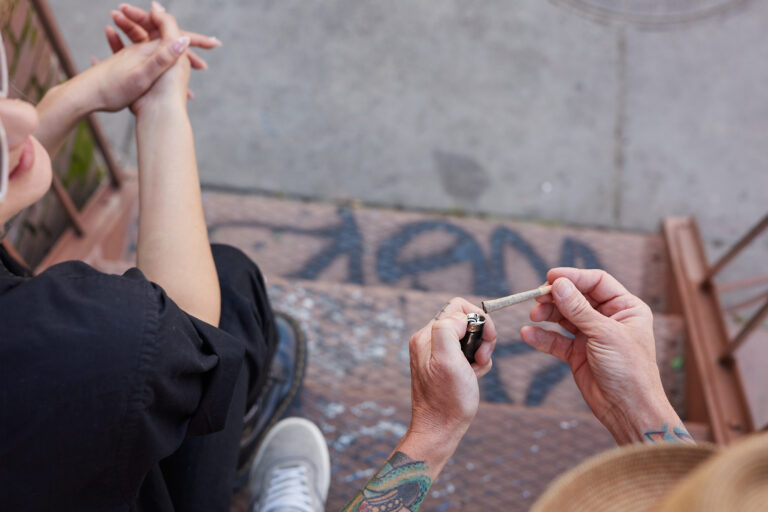 Photo by: Gina Coleman/Weedmaps
Photo by: Gina Coleman/WeedmapsImage lightbox

Some people worry about using a lighter because most standard lighters use butane as fuel. When lit, butane combusts into water vapor and carbon dioxide. If it doesn't combust completely, it can produce undesirable compounds. Some cannabis enthusiasts believe that butane can affect the taste of the cannabis, too, though that's more a matter of preference.
If you're worried about butane, one of the safest and most environmentally friendly ways to light a joint, bong, or pipe is to use a hemp wick coated in beeswax. Hemp wicks provide an alternative to traditional lighters, and you will not inhale butane when you use one. It also preserves the flavor of your joint and continues to burn even after you start smoking.
Can you light a joint with a match?
Yes, you can light a joint with a match. Some people prefer using matches over lighters. However, be sure to let the initial sulfur burn off the match before using it to light your joint to avoid inhaling sulfur byproducts or affecting the flavor of your joint.
Different types of joints
Once you've mastered the basic joint, consider rolling alternative joints:
How to roll a pinner joint
Rolling pinners is straightforward. You'll need ground cannabis flower, rolling paper (a small “single-wide" or 1¼" paper would work for a pinner), and a crutch.
- Position the crutch at one end of your rolling paper, with the glue strip facing up and on the side furthest from you.
- Folding the paper in a U-shaped boat, add the ground flower evenly above the crutch.
- Gently roll the flower-filled paper back and forth between your fingers until it compacts and forms a cylinder shape — adjust the evenness of the flower if needed.
- Bring the cylinder of flower down to the end of the paper closest to you, then roll it in on itself to start closing it up — be sure to roll it fairly tight.
- Lick the glue strip and seal, then twist off the open end.
- Light it up.
How to roll a cross joint
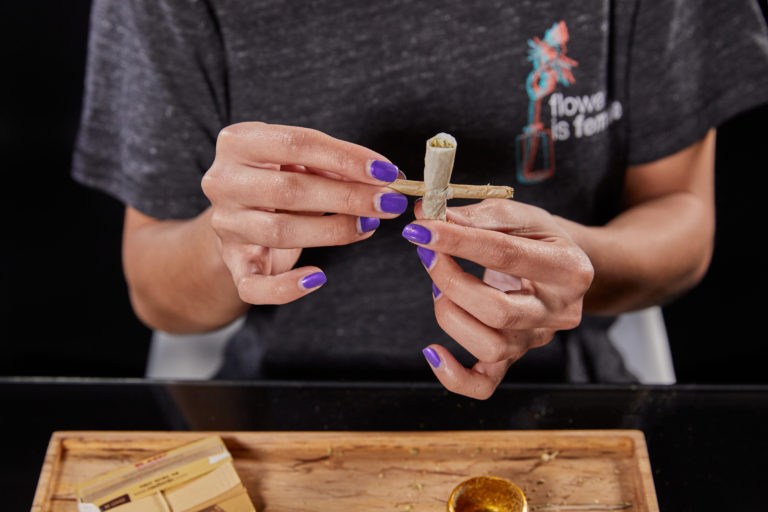 Photo by: Gina Coleman/Weedmaps
Photo by: Gina Coleman/WeedmapsImage lightbox

Learning how to roll a cross joint is easier than you might think. It involves rolling a large joint and a pinner joint and stuffing the pinner joint inside the larger joint.
How to roll a cone joint
A cone joint is a hand-rolled cigarette or joint shaped like a cone. It has a wider tip where the cannabis is lit and a narrower base where the filter or tip is located and where you would hit.
To roll a cone, simply add more flower to the end opposite the filter or add ground flower to a pre-rolled cone.
Bottom line
Joints are one of the most popular ways to smoke weed. Once you learn how to roll a basic joint, a world of other fun joint-rolling possibilities opens up to you. Or, you can skip the hand-rolling and learn how to use a joint roller.
FAQ
Can you double-wrap joints?
You can certainly double-wrap joints using two rolling papers, which some prefer for a slower burn or added strength. There are two common methods:
- Overlap method: Connects two papers by overlapping them and then rolling.
- Layer method: After rolling a joint with one paper, you wrap it again with another.
However, double-wrapping may alter the joint's taste due to the additional paper. It can also make the rolling process more challenging and lead you to inhale more combustion byproducts. The decision to double-wrap hinges on personal preference, balancing burn rate against taste and potential health considerations.
How do you put out a joint?
If you want to take a break from your smoke session and save your weed for later, you can put the joint out without much hassle:
- Use an ashtray: Find an ashtray or other non-flammable surface — such as concrete — and gently press the burning end of the joint down the way you might with a tobacco cigarette. Don't press too firmly, or you will risk crushing the joint and making it unusable later.
- Remove the cherry: Let the cherry break off and tumble into the ashtray without applying pressure. You can also gently flick it off the end of the burning joint.
- Suffocate the joint: You can “suffocate” the joint in a tightly sealed joint tube. In every scenario, the smoke from your leftover joint will have an ashy flavor profile the next time you light up, but rest assured, it will still get you adequately stoned.

